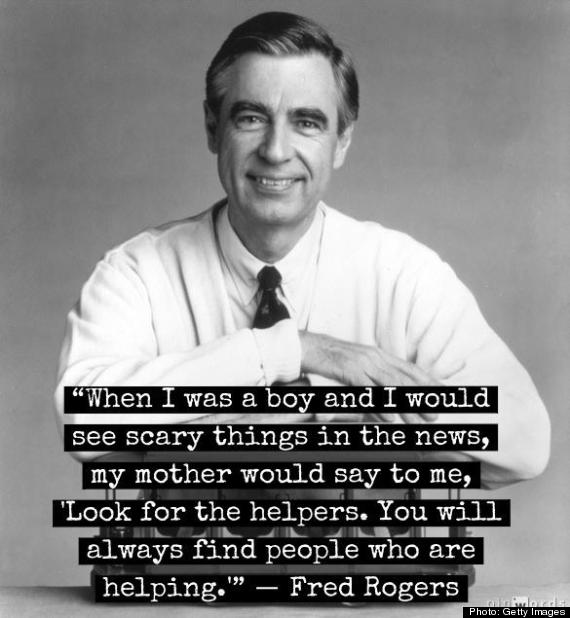
It’s a scary world out there even if you don’t have your nose stuck in a book (sometimes even with horror, as the fiction can actually be more comforting than the reality) For sure, though, if you are anywhere around kids, you’ll know that they see and hear enough to get their anxiety ratcheted way up by what’s going on in the world today.
My daughter is pretty into the chapter book stage of childhood reading at this point but she picked out a book this week that actually is all pictures and no words, which is a pretty powerful illustration (that pun was not intended) of the impact ordinary people can make on the world. and it made me think of a couple of others that might be good to share with younger kids who are getting seriously worried. There is a lot going on that I haven’t figured out how to address with my kids– fear of nuclear war, hurricanes, wildfires– gosh, there’s so much to be afraid of. But also, there are helpers. Ordinary people. Artists, librarians, letter-writers, musicians, people walking down the street, even children, who have made a difference, and continue to do so.


Letters to a Prisoner by Jacque Goldstyn
This is the wordless picture book my daughter picked out. It’s very simple– line drawings that you could almost imagine a child drawing, with watercolor washes . In it, a father is separated from his child when a peaceful protest turns violent. He is jailed, isolated from the world. All kinds of people, from all over the world (and including one astronaut) write letters to him and on his behalf, until he flies away on their wings, home again. The book was inspired by Amnesty International’s Write for Rights Campaign.


Painting for Peace in Ferguson by Carol Swartout Klein
In 2014, after a white police officer shot and killed an African-American man, Michael Brown, unrest and protests in Ferguson, Missouri resulted in violence and property damage. In an effort to begin healing the community, local artist Carol Swartout Klein brought artists and community members of all ages and races together to paint over the boarded-up storefronts with brilliant murals expressing hope and unity. Painting for Peace in Ferguson presents color photo collages of the creative people who participated and the art they created, over simple backgrounds created by Klein. Proceeds benefit art, youth and small business recovery programs in North St. Louis County.


Alia’s Mission: Saving the Books of Iraq by Mark Alan Stamaty
In 2003, Alia Muhammed Baker was the chief librarian for the Central Library in Basra, Iraq. When the Iraqi military occupied the library, she knew it was only a matter of time before the library would be bombed and the books destroyed. Determined to save the books and the collective memory of the Iraqi people, she started smuggling books out of the library under her jacket, eventually filling her entire house with stacks of books. As the bombing escalated, she recruited friends to sneak books over a wall into the restaurant on the other side. With their help, Alia was able to save 30,000 of the library’s 40,000 books before the library was destroyed. There’s a gorgeously illustrated picture book version of this story, The Librarian of Basra, but I like this graphic novel version better.


Mole Music by David McPhail
I love this book so much. Mole lives by himself, underground. Digging isn’t enough for him, so he decides to take up the violin. At first he’s terrible, but as he improves, the plants above his hole start to thrive. A tree takes root and grows, unnoticed, right through his ceiling, amplifying the beautiful music as the world above ground changes. Unaware as he is of the great conflict about to occur in the valley above him, it is Mole’s music that stops the armies in their tracks. One small person can have a very big effect.


Yo! Yes? by Chris Raschka
I get all children’s-librarian-geeky over this book. It doesn’t really have the message of “we all can change the world for the better” or even “one person can change the world for the better.”Yo! Yes? gets down to the nitty-gritty: one person reaching out to another makes both of them richer. The text of the book is very simple– one or two words on each page. The words come from a conversation the author heard between two boys while walking down the street. The book is designed so that there is one boy on each page of the double-page spread, and you can see the two halves of the conversation going back and forth. The words are big on the page, so it’s a great shared-reading book, and you get to shout a lot, which is always fun. Our story here is that we have two boys, each on his own, and one reaches out to the other to make friends. This is not a quiet, tentative thing. Once these kids connect, they are loud and joyful. The world is going to hear them coming! But none of that happens without one ordinary kid calling out to the other, and getting a response.
And now back to our regular programming.












Follow Us!